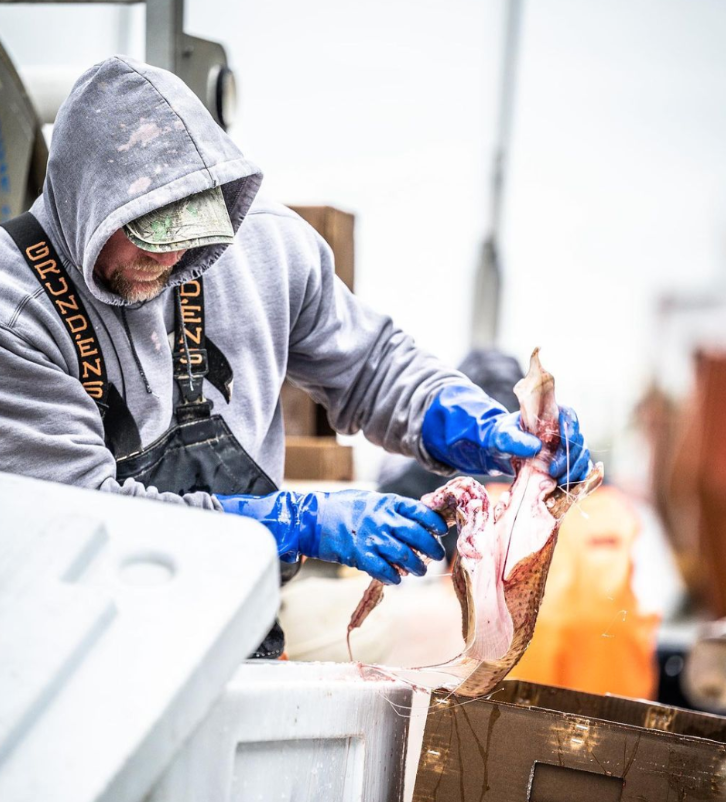
Skate
About skates
Skates are bottom-dwellers with an arrow-like body and large flat pectoral fins. There are over two hundred skate species! Though skates are related to rays, they aren't the same! Skates tend to have shorter and thicker tails than stingrays and they don't have a stinger. There are so many variety of skate from varying body size to color and size. New species of skate are still being discovered!
Storage and Cleaning
Place your skate fillet in freezer safe bags. Wrap them tightly in plastic, and squeeze as much air out of the bag as possible!
- Keep the fish refrigerated at 40°F or lower until you are ready to use it. We recommend using your fish within 2-3 days. If you know you won’t be able to use it by then, the sooner you freeze it, the better. Leftover cooked fish can be stored for up to 4 days.
-
To freeze, pat the fish dry. Wrap fillet(s) with a couple layers of plastic wrap or foil. Place fillet(s) into a freezer bag or airtight container to prevent freezer burn. If using a freezer bag, press out any excess air and seal as tight as possible. Try not to put more than one pound of fillets in each bag. This will allow the fish to freeze more quickly. You can freeze for 3-6 months.
Cooking
Skate wings can be baked, poached, fried, and roasted. Check out our recipes page for inspiration!
- If there is an odor of ammonia, we recommend soaking your skate wings in milk or water that has been acidified with vinegar or lemon juice. Typical soaking time is four hours or more. This can remove any taste of ammonia.
The wings, the most commonly served part of the skate, feature silky strands of meat that cook up rich and meltingly tender, especially if the fillets have been brined prior to cooking. The flavor of skate is mild yet distinctive, sometimes compared to scallop or crab. Skate wings have a high collagen content, which can give a nice, gelatinous texture when cooked.
Because of its mild flavor, skate is quite versatile. You might consider poaching your skate, or, commonly, dredging it in flour and pan-frying it in browned butter (see recipe below!). Olive oil also pairs nicely with skate, and can bring out its sweetness. Serving it with acid can complement the natural richness of the fish. Skate is also delicious smoked, or chilled and served with vinaigrette or mayo.
According to Barton Seaver, seafood author, skates are at the peak of their flavor in winter, when they are not spawning. They pair well with other seasonal foods like hearty winter squashes, or even spices like cinnamon.
More on skate
Skate are commonly found along all coasts of the U.S., with winter skate being among the most popular Atlantic species. They are bottom-dwelling fish that commonly feed on mollusks, crabs, and small fish (and their meat often takes on the flavor of the creatures they eat). Skate are typically long-lived, slow to sexually mature, and give birth to only a few dozen offspring per year. Many beachcombers may be familiar with their egg sacks, the black leathery pouches that wash up ashore and are sometimes called mermaid’s purse.
Photo: @vikingvillagelbi, Viking Village fishermen pack freshly caught skate
Last updated: 01/3/2023